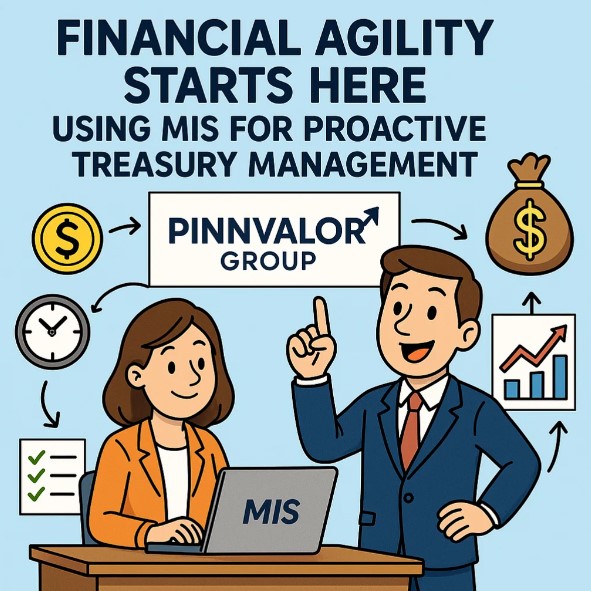
Financial Agility Starts Here: Using MIS for Proactive Treasury Management
In today’s fast-paced business environment, financial agility is not just a buzzword—it’s a necessity. As organizations face increasing pressure to maintain liquidity, mitigate risks, and respond swiftly to market dynamics, Treasury Management has taken center stage. At the heart of this transformation lies Management Information Systems (MIS)—the backbone of data-driven, proactive treasury operations.
Are outdated tools holding back your treasury's full potential?
Financial agility isn’t just a goal— it’s a competitive edge.And MIS is the engine driving it.
Understanding the Role of Treasury in Modern Finance
Traditionally viewed as the gatekeepers of cash and banking relationships, today’s treasury teams play a far more strategic role. They are responsible for ensuring sufficient liquidity, managing financial risks, optimizing working capital, and supporting enterprise-wide financial decisions.
However, these responsibilities require more than spreadsheets and periodic reports. They demand real-time visibility, predictive insights, and integrated control—areas where MIS truly delivers value.
What is MIS in Treasury Management?
Management Information Systems (MIS) refer to structured processes, technologies, and tools that collect, process, and analyze financial data to aid decision-making. Within the treasury function, MIS supports:
- Cash Flow Monitoring: Real-time tracking of inflows and outflows across accounts and geographies.
- Liquidity Management: Ensuring optimal allocation of funds and short-term investment planning.
- Risk Analysis: Measuring and managing interest rate, FX, and counterparty risks.
- Compliance Reporting: Automating regulatory and internal reporting requirements.
Why Financial Agility Depends on MIS
Financial agility means having the ability to anticipate, respond, and adapt to financial changes quickly. MIS empowers treasury teams in the following ways:
1. Real-Time Visibility
With live dashboards and automated data feeds, treasurers gain up-to-the-minute insights into cash positions, bank balances, and upcoming commitments—reducing reliance on guesswork.
2. Forecasting with Confidence
MIS helps build accurate cash flow forecasts by integrating data from receivables, payables, payroll, and capex pipelines. This foresight supports better liquidity planning and reduces idle cash.
3. Automated Alerts and Triggers
With threshold-based alerts, treasury professionals can react immediately to cash shortages, overdrafts, or mismatched payments—ensuring control without micromanagement.
4. Enhanced Decision-Making
By transforming raw data into actionable insights, MIS enables strategic decisions like early debt repayments, investment opportunities, or FX hedging strategies.

Key Features of a Treasury-Focused MIS
An effective MIS for treasury should include the following functionalities:
- Multi-bank integration for consolidated cash reporting
- Customizable dashboards for key metrics and trends
- Scenario-based forecasting tools
- Audit trails and access controls for governance
- Automated reporting for internal and regulatory compliance
Implementation Challenges and Best Practices
While the benefits of MIS are clear, implementing it effectively can pose challenges:
- Data Silos: Ensure seamless integration across ERP, banking systems, and business units.
- User Adoption: Provide training and intuitive UI to drive adoption among treasury and finance teams.
- Customization: Tailor MIS modules to fit organizational workflows, rather than adopting generic setups.
The Strategic Payoff
Companies that embrace MIS for treasury operations are not just optimizing their cash flows—they are future-proofing their financial strategy. From dynamic scenario planning to improved regulatory compliance and reduced operational risk, the returns are tangible and long-term.
Conclusion
Financial agility begins with insight—and insight begins with MIS. In an age where liquidity is power and responsiveness is critical, equipping treasury with robust MIS tools is not optional—it’s strategic. The organizations that invest in these capabilities today will be tomorrow’s leaders in financial resilience and strategic agility.
